MARKETING
What Services Should I Offer As a Copywriter?


Copywriters are a rare breed of freelancer. Not only do we have extensive knowledge of marketing but we geek out on the principles of human psychology, and have a flair for the written word in a way that allows us to sell in a cool and sophisticated way…
And because of that… we tend to sort of be good at… a lot of things? Or at least that’s what your clients probably think.
If you think about it, sometimes the actual role of a copywriter can get a little fuzzy at times. With clients expecting you to act as a copywriter one day, a content writer the next day, and a full-blown marketing strategist the day after that!
So the question is this: where do you draw the line?
As a copywriter, what jobs should you actually be doing?
Well, the great thing about being a freelance copywriter is that you can offer whatever you want… or don’t want to do!
When I started my business I often offered additional services above and beyond copywriting to get my foot in the door. Today, any clients who hire my agency get copy and consulting, that’s it.
So while your goal might be to get to a point where ALL you do is write words in documents and send them over to your clients, it’s entirely possible to expand your job scope to gain experience and build client relationships.
So in this article I’m going to be breaking down the common roles and responsibilities that a copywriter fulfills, BUT I’m also going to share the additional services that you can take on as a copywriter…
To not only better serve your clients, but to also put more of dat money in your pocket!
Hey Posse, it’s Alex! Coming at ya this week with another blog by request!
My DMs are typically full of messages from my community and I often get asked these TWO questions…
The first typically comes from people who haven’t taken the plunge into copywriting just yet, and are wondering what exactly it is that a copywriter does…
And the second comes from relatively new copywriters who are dealing with clients that expect them to be a jack-of-all-trades, and they’re wondering what exactly they should be doing…
So if you fall into one of those two categories… then leave me a comment up below, because this blog is for YOU.
And if you’re new to the crew – WELCOME! I put out a new marketing, copywriting, or mindset blog every single week. So leave your email below to get more articles like this one.
So if you’ve ever wondered what a copywriter actually DOES or what freelancing services you can offer clients as a beginner copywriter, here are 16 ways you can start making more money in your business.
Take out a pen and paper, and get ready to write down the ones you vibe with the most. And if you’re a business owner, looking to hire a copywriter – then I’m going to share you with my Copywriter Job Description—to make your search for a copywriter as easy (and seamless) as possible.
Ok I’ve broken these services down into 3 categories, and the first is, of course…
1. Copywriting Services
Okay, so this first category is the list of services that actually fall under a copywriter’s job description (in my opinion). This is what savvy clients, who actually understand what you do, may expect you to do for them.
Now before you get too overwhelmed with the list I’m about to go over, please keep in mind that this is YOUR copywriting business. And you DO NOT have to offer all of these assets if you don’t want to.
Ads
This can include digital ads like the ones you see on Google, Facebook, and Instagram, video ads like you see right here on YouTube, or even printed ads that you might see in Newspapers and on Flyers.
The main purpose of digital ads, of course, is to get a CLICK. Now with ads (all forms of copywriting actually), it’s very important to remember that your headline, and the first few sentences of text, are the MOST IMPORTANT THING to get right.
Because in the age of ‘the scroll’ you simply have to master the art of crafting compelling hooks. All great ads grab attention with a powerful hook.
Email Marketing
Yep, it’s exactly what it sounds like. Emails sent to a list of subscribers with the sole purpose of marketing something – although great email campaigns should also add a lot of value and focus on building rapport with the list.
So depending on your client’s needs, they may ask you for different types of emails like autoresponders, an indoctrination sequence, sales emails, content emails, affiliate emails or re-engagement emails—as a copywriter you can add all of these to your list of services…
BUT as a copywriter, your job is to only WRITE these emails. You do not need to be the one to load these emails into your client’s email sending software unless you WANT TO. I have never offered this to a client because it’s tedious and technical and you never want to be the one that actually sends an email draft to the entire list.
Landing Pages
It’s like a sales page… but WAY shorter and used for the main purpose of lead generation. So if the #1 job of your ad is to convert eyeballs into clicks, the #1 job of a landing page is to convert more clicks into leads. You want to motivate & inspire a prospect to enter their information (typically first name and email) in exchange for a “Free High-Value Promise” or what is more commonly called a lead magnet.
Sales Pages
And the BIG ONE. This is what I like to call your moneymaker… because not only is this the page that’s going to make your clients the most money and profit in their business…
But it’s the page that’ll get YOU paid the most money to write!
The copywriting magic needed to turn prospects into paying customers is where persuasion, psychology, and major writing swagger come into play.
In my opinion, ALL copywriters need to master this skill—it’s what sets us apart from other content writers.
Now if you’re a copywriter or business owner, looking to write a high-converting Sales Page that will get you paid, and keep clients and prospects coming back to you for more and more…. and more. Then make sure to check out my 5 Day Write & Ignite Challenge, where I teach you the exact proven sales page formula that I personally use in multi-million dollar launches.
Home Pages & Website Copy
This is what I refer to as branding copy or authority copy! While conversions are still important on your main homepage, your brand message is EVERYTHING. Your home page is the first thing that people see when visiting your website so you gotta make a great first impression! The goal of a Homepage is simple: to create trust, build authority, and offer next steps.
About Pages
With more and more audiences seeking out products, coaches, and businesses that share their same values, well-written About Pages are a great opportunity to share a brand’s story, vision, mission, philosophy, and what makes them different.
It’s your way of answering the question – yeah, but who are you… really?
As a copywriter, you can offer this a service to any client that doesn’t already have an About Page OR you can offer to revamp any About Pages that are dull and less than inspiring.
And – in case you were wondering – your job as the copywriter is to simply write these pages (same with landing pages, sales pages, and websites) and not actually BUILD them.
Promotional Videos & Video Sales Letters
Remember what I’ve been saying over and over again to you guys?! VIDEO IS THE FUTURE!
In fact, 87% of video marketers say that video gives them a positive return on investment. So it’s safe to say that… yes. Video marketing is indeed where it’s at! Says the girl who spends HOURS making video content every week.
Promotional videos are used for the purpose of promoting a specific marketing initiative, event, or product. They are typically short, sweet, and to the point. The copy part of promo videos will include the video’s titles, subtitles, any copy that’s used as visual elements throughout the video, and of course the SCRIPT.
And it’s important to remember that although copy is only PART of what makes a great promo video, up to 85% of Facebook videos are watched without sound. So making sure that the copy you have in your video subtitles is essential in boosting your conversions.
Another type of video marketing that requires copywriting skills is VSLs – or video sales letters! Video sales letters are similar to written sales letters except they are written scripts, rather than a written page.
Again, your job as the copywriter is to simply WRITE the video scripts and ancillary copy – not actually produce the videos!
Product Descriptions
Product descriptions refer to that short little blurb of text that describes what a product is, what it does, and WHY someone should buy it. It’s incredibly common in e-commerce stores where copy space for products is limited.
But a common mistake that I see made ALL of the time is a boring product description that just… describes the product. You know, all features and no benefits.
Great product descriptions need to go deeper than the boring left-brain need-to-know stuff.
You want customers to read your product description and think… Wow now that’s cool/interesting/unique/smart/funny! I gotta get it!
Alright that covers the bases of copywriting services. Now let’s move onto a different service package you can consider offering for your clients…
2. Content Writing
As a professional copywriter, you’ll find that A LOT of businesses will ask you to do some content writing for them as well…
And just like picking and choosing your copywriting services, you can and should use your own discretion on whether or not you will offer content writing for your clients as well.
While copywriting is the art of crafting words for the sole purpose of conversion… Content writing focuses more on engagement, education, and brand awareness.
And there are various forms of content writing that you can choose to include in your services, but I’m just going to cover the 5 big ones that will be most beneficial to your clients…
Social Media Captions
Social Media is a HUGE part of most brands and businesses’ marketing strategies these days, and if it’s not already, then it definitely should be.
Because Social Media is where the majority of the population is hanging out on a day-to-day basis.
Globally, over 3.6 billion people use social media… and that number is expected to increase to 4.4 billion by the year 2025.
And handling your client’s social media captions and content is a great way to get your foot in the door with a client that you really want to work with. Just remember that the main purpose of social media is to connect and engage with the audience… So you should always be providing value in the form of either education, entertainment, or inspiration.
Blog Posts
I mean come on… everyone knows the power of blogging. Blogs are one of the best ways to get ranked in Google searches and optimize your SEO. But the thing is… most busy business owners just don’t have the time (or energy ) to pump out blog posts on a consistent basis.
And that’s where YOU can step up and offer your services. As a minimum, you could offer at least 1 blog post a week, and of course, go up from there!
Newsletters
These are the weekly, bi-weekly, or monthly emails that get sent out to a list of subscribers. The purpose isn’t to sell or promote anything directly, but rather to build rapport, trust, and credibility. And most importantly, CREATE A SENSE OF COMMUNITY.
Because one thing is for certain in this day-and-age… customers don’t stick around with brands that they don’t feel connected to on some level. So if your clients don’t already send out consistent content-rich newsletters to their mailing list, then they are missing out on a huge opportunity to cultivate a loyal following – and BOOM – guess who can help them out with that?….
Content Videos
Content videos are a MASSIVE way to build a loyal following and brand. I know because I grew my entire business with content videos!
And yes, like promotional videos, all content videos start out as a script or, at the very least, a loose outline! Because even though they are personal and conversational, you still want to make sure your content videos are informative and valuable and follow a framework!
Not to mention the need to craft compelling headlines and convince viewers to watch, like, and subscribe.
So as a copywriter, you can absolutely offer content video scripts to your list of services!
SEO
Aka search engine optimization. Essentially, SEO is focused on improving the visibility of your website by getting it to rank higher in search engines.
Now, this is something that I get asked ALL of the time… Alex, do I NEED to know SEO as a conversion copywriter?
And the answer is no…
I mean I straight-up tell my clients that I’m not an expert in SEO. I literally know nothing about it except the general basics of how it works. And it’s not something that interests me enough to study and become a master at.
So I always recommend that my clients work with an SEO specialist if they are looking to optimize their websites in that way.
But, but BUT… that doesn’t mean you can’t add SEO to your list of services if you know what you’re doing!
SEO copywriting is common in particular industries and niches so do your research and find out if it’s something you WANT to consider mastering.
I mean, killer SEO strategies with high-converting copy sounds like a winning combination if you ask me.
So if you want to take things one step further and add SEO onto your list of services that you offer to clients, you definitely can.
But you’ll want to make sure that you know more than “just the basics” if you’re calling yourself an SEO specialist.
The good news is, the best SEO secret in the world is to write copy and content that is valuable, creates authority, and gets people to stay and engage with your page or website – which as a copywriter you’ll already know how to do. Alright, now the 3rd category of services you could offer is…
3. Marketing Support
If you REALLY want to beef up your packages (and the money you have coming in), you may want to consider offering marketing services to your clients as well.
Offering additional marketing support can make you invaluable to your clients because they’re basically getting a unicorn – someone who can write, strategize and implement.
Of course, there’s a whole slew of services that you could offer under this category… but let’s just cover the basic 3 that most copywriters could easily transition into offering.
Community Management
A major part of writing in business comes down to communicating with followers, subscribers, and customers via email, membership sites and social media. Customer support was the first role I had at Mindvalley so if you’re looking to get your foot in the door with a brand you’d LOVE to write copy for, why not offer community management as a service to showcase your writing ability?
Funnel-Building
If you have a more technical flair and you’re familiar with online tools like GrooveFunnels, ClickFunnels, Kajabi, or others, you can add funnel-building to your list of services! This is essentially CREATING the pages and sales funnels you are writing. This can be a highly valuable service that will save your clients from having to hire someone else OR spend hours doing it themselves.
Marketing Consulting
This is something you might start to offer after you’ve been in the game for a while, and have developed a pretty solid understanding of the world of marketing.
A marketing consultant is an advisor and strategies who works with companies to create and design marketing campaigns.
As a marketing consultant, you could help to create detailed marketing plans, determine a business’s marketing message, and identify the right marketing mix to most effectively get your client’s message out to the masses.
Remember, as a copywriter, you really are the best of both worlds… word nerd meets marketing master.
So pick and choose the services that resonate the most with you.
And never forget the value you bring to the table.
MARKETING
18 Events and Conferences for Black Entrepreneurs in 2024
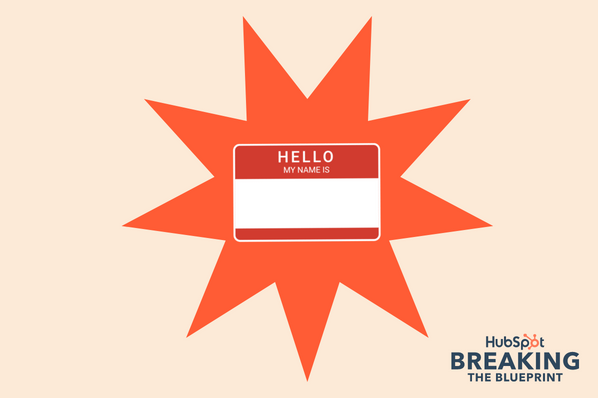
Welcome to Breaking the Blueprint — a blog series that dives into the unique business challenges and opportunities of underrepresented business owners and entrepreneurs. Learn how they’ve grown or scaled their businesses, explored entrepreneurial ventures within their companies, or created side hustles, and how their stories can inspire and inform your own success.
It can feel isolating if you’re the only one in the room who looks like you.
MARKETING
IAB Podcast Upfront highlights rebounding audiences and increased innovation
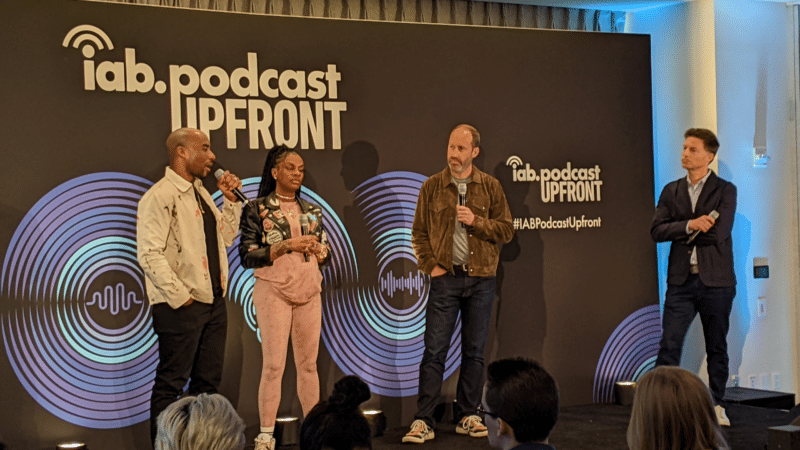
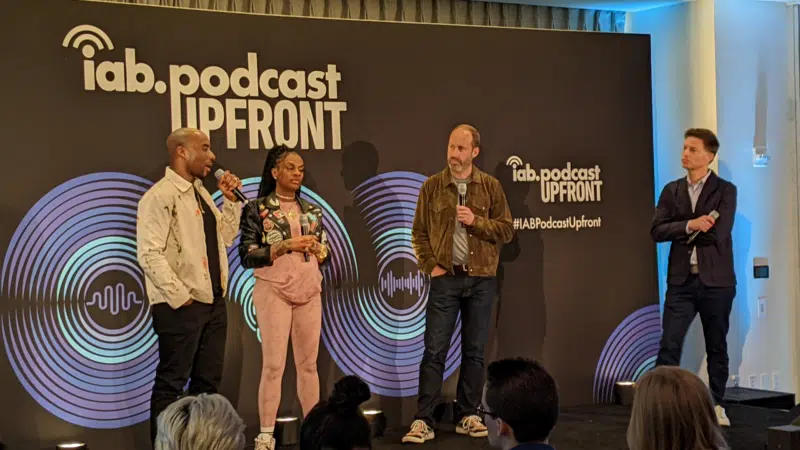
Podcasts are bouncing back from last year’s slowdown with digital audio publishers, tech partners and brands innovating to build deep relationships with listeners.
At the IAB Podcast Upfront in New York this week, hit shows and successful brand placements were lauded. In addition to the excitement generated by stars like Jon Stewart and Charlamagne tha God, the numbers gauging the industry also showed promise.
U.S. podcast revenue is expected to grow 12% to reach $2 billion — up from 5% growth last year — according to a new IAB/PwC study. Podcasts are projected to reach $2.6 billion by 2026.
The growth is fueled by engaging content and the ability to measure its impact. Adtech is stepping in to measure, prove return on spend and manage brand safety in gripping, sometimes contentious, environments.
“As audio continues to evolve and gain traction, you can expect to hear new innovations around data, measurement, attribution and, crucially, about the ability to assess podcasting’s contribution to KPIs in comparison to other channels in the media mix,” said IAB CEO David Cohen, in his opening remarks.
Comedy and sports leading the way
Podcasting’s slowed growth in 2023 was indicative of lower ad budgets overall as advertisers braced for economic headwinds, according to Matt Shapo, director, Media Center for IAB, in his keynote. The drought is largely over. Data from media analytics firm Guideline found podcast gross media spend up 21.7% in Q1 2024 over Q1 2023. Monthly U.S. podcast listeners now number 135 million, averaging 8.3 podcast episodes per week, according to Edison Research.
Comedy overtook sports and news to become the top podcast category, according to the new IAB report, “U.S. Podcast Advertising Revenue Study: 2023 Revenue & 2024-2026 Growth Projects.” Comedy podcasts gained nearly 300 new advertisers in Q4 2023.
Sports defended second place among popular genres in the report. Announcements from the stage largely followed these preferences.
Jon Stewart, who recently returned to “The Daily Show” to host Mondays, announced a new podcast, “The Weekly Show with Jon Stewart,” via video message at the Upfront. The podcast will start next month and is part of Paramount Audio’s roster, which has a strong sports lineup thanks to its association with CBS Sports.
Reaching underserved groups and tastes
IHeartMedia toasted its partnership with radio and TV host Charlamagne tha God. Charlamagne’s The Black Effect is the largest podcast network in the U.S. for and by black creators. Comedian Jess Hilarious spoke about becoming the newest co-host of the long-running “The Breakfast Club” earlier this year, and doing it while pregnant.
The company also announced a new partnership with Hello Sunshine, a media company founded by Oscar-winner Reese Witherspoon. One resulting podcast, “The Bright Side,” is hosted by journalists Danielle Robay and Simone Boyce. The inspiration for the show was to tell positive stories as a counterweight to negativity in the culture.
With such a large population listening to podcasts, advertisers can now benefit from reaching specific groups catered to by fine-tuned creators and topics. As the top U.S. audio network, iHeartMedia touted its reach of 276 million broadcast listeners.
Connecting advertisers with the right audience
Through its acquisition of technology, including audio adtech company Triton Digital in 2021, as well as data partnerships, iHeartMedia claims a targetable audience of 34 million podcast listeners through its podcast network, and a broader audio audience of 226 million for advertisers, using first- and third-party data.
“A more diverse audience is tuning in, creating more opportunities for more genres to reach consumers — from true crime to business to history to science and culture, there is content for everyone,” Cohen said.
The IAB study found that the top individual advertiser categories in 2023 were Arts, Entertainment and Media (14%), Financial Services (13%), CPG (12%) and Retail (11%). The largest segment of advertisers was Other (27%), which means many podcast advertisers have distinct products and services and are looking to connect with similarly personalized content.
Acast, the top global podcast network, founded in Stockholm a decade ago, boasts 125,000 shows and 400 million monthly listeners. The company acquired podcast database Podchaser in 2022 to gain insights on 4.5 million podcasts (at the time) with over 1.7 billion data points.
Measurement and brand safety
Technology is catching up to the sheer volume of content in the digital audio space. Measurement company Adelaide developed its standard unit of attention, the AU, to predict how effective ad placements will be in an “apples to apples” way across channels. This method is used by The Coca-Cola Company, NBA and AB InBev, among other big advertisers.
In a study with National Public Media, which includes NPR radio and popular podcasts like the “Tiny Desk” concert series, Adelaide found that NPR, on average, scored 10% higher than Adelaide’s Podcast AU Benchmarks, correlating to full-funnel outcomes. NPR listeners weren’t just clicking through to advertisers’ sites, they were considering making a purchase.
Advertisers can also get deep insights on ad effectiveness through Wondery’s premium podcasts — the company was acquired by Amazon in 2020. Ads on its podcasts can now be managed through the Amazon DSP, and measurement of purchases resulting from ads will soon be available.
The podcast landscape is growing rapidly, and advertisers are understandably concerned about involving their brands with potentially controversial content. AI company Seekr develops large language models (LLMs) to analyze online content, including the context around what’s being said on a podcast. It offers a civility rating that determines if a podcast mentioning “shootings,” for instance, is speaking responsibly and civilly about the topic. In doing so, Seekr adds a layer of confidence for advertisers who would otherwise pass over an opportunity to reach an engaged audience on a topic that means a lot to them. Seekr recently partnered with ad agency Oxford Road to bring more confidence to clients.
“When we move beyond the top 100 podcasts, it becomes infinitely more challenging for these long tails of podcasts to be discovered and monetized,” said Pat LaCroix, EVP, strategic partnerships at Seekr. “Media has a trust problem. We’re living in a time of content fragmentation, political polarization and misinformation. This is all leading to a complex and challenging environment for brands to navigate, especially in a channel where brand safety tools have been in the infancy stage.”
Dig deeper: 10 top marketing podcasts for 2024
MARKETING
Foundations of Agency Success: Simplifying Operations for Growth


Why do we read books like Traction, Scaling Up, and the E-Myth and still struggle with implementing systems, defining processes, and training people in our agency?
Those are incredibly comprehensive methodologies. And yet digital agencies still suffer from feast or famine months, inconsistent results and timelines on projects, quality control, revisions, and much more. It’s not because they aren’t excellent at what they do. I
t’s not because there isn’t value in their service. It’s often because they haven’t defined the three most important elements of delivery: the how, the when, and the why.
Complicating our operations early on can lead to a ton of failure in implementing them. Business owners overcomplicate their own processes, hesitate to write things down, and then there’s a ton of operational drag in the company.
Couple that with split attention and paper-thin resources and you have yourself an agency that spends most of its time putting out fires, reacting to problems with clients, and generally building a culture of “the Founder/Creative Director/Leader will fix it” mentality.
Before we chat through how truly simple this can all be, let’s first go back to the beginning.
When we start our companies, we’re told to hustle. And hustle hard. We’re coached that it takes a ton of effort to create momentum, close deals, hire people, and manage projects. And that is all true. There is a ton of work that goes into getting a business up and running.


The challenge is that we all adopt this habit of burning the candle at both ends and the middle all for the sake of growing the business. And we bring that habit into the next stage of growth when our business needs… you guessed it… exactly the opposite.
In Mike Michalowitz’s book, Profit First he opens by insisting the reader understand and accept a fundamental truth: our business is a cash-eating monster. The truth is, our business is also a time-eating monster. And it’s only when we realize that as long as we keep feeding it our time and our resources, it’ll gobble everything up leaving you with nothing in your pocket and a ton of confusion around why you can’t grow.
Truth is, financial problems are easy compared to operational problems. Money is everywhere. You can go get a loan or go create more revenue by providing value easily. What’s harder is taking that money and creating systems that produce profitably. Next level is taking that money, creating profit and time freedom.
In my bestselling book, The Sabbatical Method, I teach owners how to fundamentally peel back the time they spend in their company, doing everything, and how it can save owners a lot of money, time, and headaches by professionalizing their operations.
The tough part about being a digital agency owner is that you likely started your business because you were great at something. Building websites, creating Search Engine Optimization strategies, or running paid media campaigns. And then you ended up running a company. Those are two very different things.


How to Get Out of Your Own Way and Create Some Simple Structure for Your Agency…
- Start Working Less
I know this sounds really brash and counterintuitive, but I’ve seen it work wonders for clients and colleagues alike. I often say you can’t see the label from inside the bottle and I’ve found no truer statement when it comes to things like planning, vision, direction, and operations creation.
Owners who stay in the weeds of their business while trying to build the structure are like hunters in the jungle hacking through the brush with a machete, getting nowhere with really sore arms. Instead, define your work day, create those boundaries of involvement, stop working weekends, nights and jumping over people’s heads to solve problems.
It’ll help you get another vantage point on your company and your team can build some autonomy in the meantime.
- Master the Art of Knowledge Transfer
There are two ways to impart knowledge on others: apprenticeship and writing something down. Apprenticeship began as a lifelong relationship and often knowledge was only retained by ONE person who would carry on your method.
Writing things down used to be limited (before the printing press) to whoever held the pages.
We’re fortunate that today, we have many ways of imparting knowledge to our team. And creating this habit early on can save a business from being dependent on any one person who has a bunch of “how” and “when” up in their noggin.
While you’re taking some time to get out of the day-to-day, start writing things down and recording your screen (use a tool like loom.com) while you’re answering questions.


Deposit those teachings into a company knowledge base, a central location for company resources. Some of the most scaleable and sellable companies I’ve ever worked with had this habit down pat.
- Define Your Processes
Lean in. No fancy tool or software is going to save your company. Every team I’ve ever worked with who came to me with a half-built project management tool suffered immensely from not first defining their process. This isn’t easy to do, but it can be simple.
The thing that hangs up most teams to dry is simply making decisions. If you can decide how you do something, when you do it and why it’s happening that way, you’ve already won. I know exactly what you’re thinking: our process changes all the time, per client, per engagement, etc. That’s fine.
Small businesses should be finding better, more efficient ways to do things all the time. Developing your processes and creating a maintenance effort to keep them accurate and updated is going to be a liferaft in choppy seas. You’ll be able to cling to it when the agency gets busy.
“I’m so busy, how can I possibly work less and make time for this?”


You can’t afford not to do this work. Burning the candle at both ends and the middle will catch up eventually and in some form or another. Whether it’s burnout, clients churning out of the company, a team member leaving, some huge, unexpected tax bill.
I’ve heard all the stories and they all suck. It’s easier than ever to start a business and it’s harder than ever to keep one. This work might not be sexy, but it gives us the freedom we craved when we began our companies.
Start small and simple and watch your company become more predictable and your team more efficient.
-

 PPC6 days ago
PPC6 days agoHow the TikTok Algorithm Works in 2024 (+9 Ways to Go Viral)
-

 SEO7 days ago
SEO7 days agoBlog Post Checklist: Check All Prior to Hitting “Publish”
-

 SEO5 days ago
SEO5 days agoHow to Use Keywords for SEO: The Complete Beginner’s Guide
-

 MARKETING6 days ago
MARKETING6 days agoHow To Protect Your People and Brand
-

 SEARCHENGINES7 days ago
SEARCHENGINES7 days agoGoogle Started Enforcing The Site Reputation Abuse Policy
-

 PPC7 days ago
PPC7 days agoHow to Craft Compelling Google Ads for eCommerce
-

 PPC7 days ago
PPC7 days agoHow to Brainstorm Business Ideas: 9 Fool-Proof Approaches
-

 MARKETING7 days ago
MARKETING7 days agoElevating Women in SEO for a More Inclusive Industry


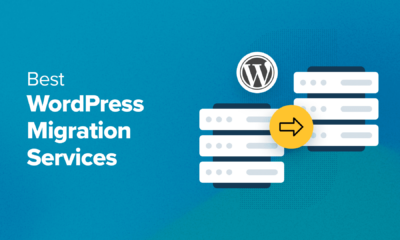

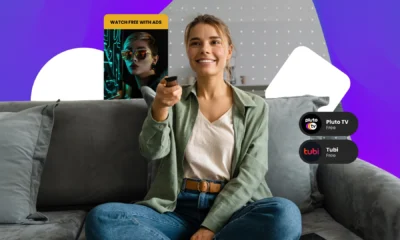







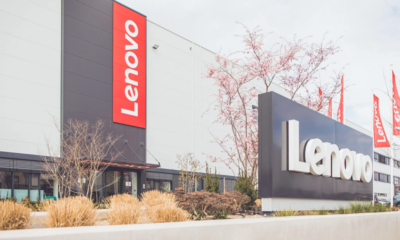




You must be logged in to post a comment Login